-
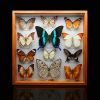 +29 +1
+29 +1The Hidden Butterfly Trade
How the lucrative market could spark conservation.
-
 +25 +1
+25 +1Floral Time Travel: Flowers Were More Diverse 100 Million Years Ago Than They Are Today
Angiosperm flowers reached their greatest morphological diversity early in their evolutionary history
-
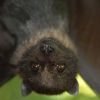 +33 +1
+33 +121 species removed from endangered list due to extinction, U.S. wildlife officials say
The Fish and Wildlife Service said 21 species, including a mammal, birds, fish and mussels, are being removed from the endangered list because they're now considered extinct.
-
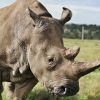 +15 +1
+15 +1Biodiversity: Almost half of animals in decline, research shows
A study led by Queen's University Belfast finds 48% of species are undergoing population declines.
-
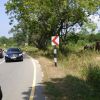 +18 +1
+18 +1Human activities have reduced elephant habitat by nearly two-thirds since 1700, dividing population into smaller patches
Despite their iconic status and long association with humans, Asian elephants are one of the most endangered large mammals. Believed to number between 45,000 and 50,000 individuals worldwide, they are at risk throughout Asia due to human activities such as deforestation, mining, dam building and road construction, which have damaged numerous ecosystems.
-
 +20 +1
+20 +1The climate crisis and biodiversity crisis can't be approached separately, says study
Human beings have massively changed the Earth system. Greenhouse-gas emissions produced by human activities have caused the global mean temperature to rise by more than 1.1°C compared to the preindustrial era. And every year, there are additional emissions of carbon dioxide, methane and other greenhouse gases, currently amounting to more than 55 gigatons of carbon dioxide equivalent.
-
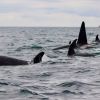 +3 +1
+3 +1What do killer whales eat in the North Atlantic? Fat's the question!
Here is a killer whale fact for you: despite decades of intensive research, we still do not know for sure what killer whales eat in most regions of the world. Killer whales are top predators, and the amount and types of animals they eat can greatly impact a whole ecosystem. To figure out how killer whales can affect communities, we first need to know what they like to eat and how much of it they eat.
-
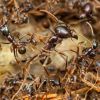 +12 +1
+12 +1How a Lone Researcher Faced Down Millions of Army Ants on the March in Ecuador
Renowned entomologist Frank Nischk remembers when the determined insects tried to invade a field station. One afternoon, I was sitting on the veranda at the small research station in the reserve. I was alone, because my botanical colleagues were busy with their work in the forest. I was sorting and preparing my collection: dried crickets, the fruits of two weeks’ work in the cloud forest. Then I heard a swell of rustling and murmuring, and knew immediately what was moving toward me.
-
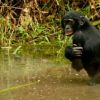 +20 +1
+20 +1Overconsumption by the rich must be tackled, says acting UN biodiversity chief
Governments and businesses must start implementing this decade’s deal to halt the destruction of Earth’s ecosystems as soon as possible, the acting UN biodiversity chief has said, urging rich nations to tackle overconsumption of the planet’s resources.
-
 +21 +1
+21 +1Ecosystem collapse ‘inevitable’ unless wildlife losses reversed
The steady destruction of wildlife can suddenly tip over into total ecosystem collapse, scientists studying the greatest mass extinction in Earth’s history have found. Many scientists think the huge current losses of biodiversity are the start of a new mass extinction. But the new research shows total ecosystem collapse is “inevitable”, if the losses are not reversed, the scientists said.
-
 +15 +1
+15 +1The Endangered Species Act Turns 50: Assessing Successes & Failures
Thanks to the ESA, at least 227 species have been saved from extinction and 110 species have seen a tremendous recovery including American alligators, bald eagles, peregrine falcons, and humpback whales.
-
 +16 +1
+16 +1Be kind to bees, build with bee bricks
We know that bees are important to natural ecosystems and also to human agriculture and horticulture. They are great pollinators of so plant flowering plant species and are also a source of food and materials we have used for thousands of years, namely honey, honeycomb, and beeswax.
-
 +20 +1
+20 +1Supercomputer Says 27% of Life on Earth Will Be Dead by the End of This Century
No matter how scientists queued up one of Europe’s most powerful supercomputers, the results remained the same: Mass extinction of plants and animals isn’t slowing down. It’s only growing. A new study from a European Commission scientist and a professor from Australia modeled climate and land use changes and their impact on plant and animal species. The results are bleak: the supercomputer says 10 percent of all plant and animal species will disappear by 2050, and 27 percent of vertebrate diversity will vanish by 2100. Yeah, that’s over a quarter of our animals gone in about 75 years.
-
 +20 +1
+20 +1DNA in the water shows South African scientists where to find a rare pipefish
Keeping track of the world’s wildlife populations is fundamental to conservation efforts in the face of the continued deterioration of global biodiversity. But some species are harder to study than others. Some aquatic species, for instance, elude detection because they are extremely rare and sparsely distributed.
-
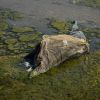 +13 +1
+13 +1How the war in Ukraine is killing marine mammals
Every morning at dawn, Ivan Rusev walks along the shoreline of the Black Sea in south-western Ukraine. In the autumn, he was watching as millions of migratory birds set off for the south. The last of the pelicans departed at the end of September and they won't return until March.
-
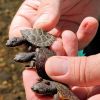 +15 +1
+15 +1Tiny, 'beautiful' endangered turtle hatchlings spotted in the wild for first time in four years
For the first time since surveying for the endangered Australian freshwater turtle species began in 2019, Manning River turtle hatchlings about the size of a 20-cent coin are spotted in the wild.
-
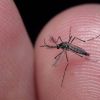 +26 +1
+26 +1'Super' mosquitoes have now mutated to withstand insecticides, scientists say
One of the most vilified pest species on the planet continues to outsmart the ways in which humans attempt to get rid of them. "Super" mosquitoes have evolved to withstand insecticides, according to new research -- and the most "sobering" finding is the high rate in which a species known for carrying disease has developed mutations.
-
 +20 +1
+20 +1Children born today will see literally thousands of animals disappear in their lifetime, as global food webs collapse
New research finds nearly 30% of land animals could disappear form their local area by 2100 due to climate change and habitat destruction. This is more than double previous predictions.
-
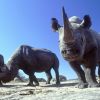 +19 +1
+19 +1Black rhino populations are starting to thrive in Zimbabwe for the first time in decades, experts say
Rhinoceros populations are beginning to rebound in the species' native home of Zimbabwe, a sign that efforts to preserve the species are working, according to animal conservationists. The rhino population in Zimbabwe has surpassed more than 1,000 animals for the first time in more than 30 years, according to the International Union for Conservation of Nature Species Survival Commission's African Rhino Specialist Group.
-
 +16 +1
+16 +1Study reveals how ancient fish colonized the deep sea
The deep sea contains more than 90% of the water in our oceans, but only about a third of all fish species. Scientists have long thought the explanation for this was intuitive — shallow ocean waters are warm and full of resources, making them a prime location for new species to evolve and thrive.
Submit a link
Start a discussion




















